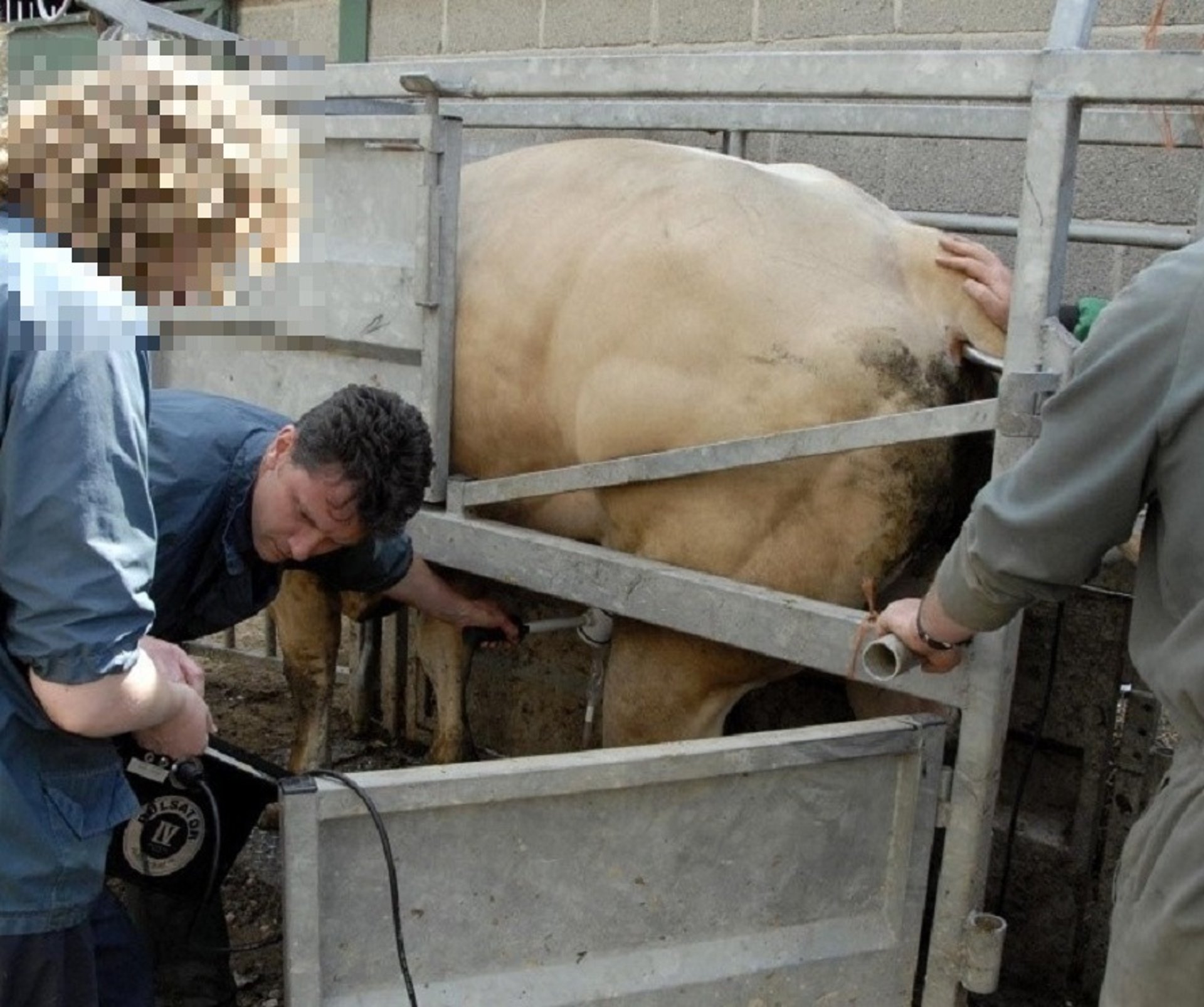Courtesy of Dr. Jonathan Statham.
Courtesy of Dr. Jonathan Statham.
Courtesy of Dr. Jonathan Statham.
Courtesy of Dr. Jonathan Statham.
A desirable goal for beef producers is a 95% calf crop delivered within 45–65 days, with an optimal weaning weight obtained at the most efficient cost. Bull selection, management, and evaluation of performance are integral aspects of beef improvement. The bull can affect the calving percentage, as well as the quality of calves. The use of performance-tested bulls (beef and dairy) is recommended for both natural breeding and AI.
A disease control program for bulls should include the following procedures:
Before use, bulls should be checked for brucellosis, tuberculosis, trichomoniasis, bovine viral diarrhea, and paratuberculosis. Bulls previously used in other herds, particularly herds in which disease status is not known, may transmit diseases, especially campylobacteriosis and trichomoniasis. Prophylactic sheath washing with antimicrobials may decrease the risk of Campylobacter transmission.
Depending on prevailing health status and market requirements, bulls should be vaccinated against infectious bovine rhinotracheitis, bovine viral diarrhea, clostridial diseases, Haemophilus-induced diseases, campylobacteriosis, and leptospirosis, if possible. Vaccines should be administered around puberty at 6 months old,again at 1 year of age, and then annually, usually 1 month before the breeding season.
Breeding soundness examinations should be performed annually at the most economically advantageous time for the producer (usually 1 month before the breeding season) to allow time for corrective action, including the purchase of additional bulls if necessary.
All bulls should be on the premises ~2 months before the breeding season so that they can adapt to the environment. New additions to the herd (both bulls and cows) should be isolated for proper adaptation and preparation. A breeding soundness examination consisting of a thorough physical examination of both internal and external genitalia, measurement of the scrotal circumference, and microscopic examination of the semen for sperm motility and morphology should be conducted ~1 month before the breeding season.
More objective methods of semen evaluation than standard microscopy are now available, such as computer-assisted semen analysis (CASA) to evaluate motility and flow cytometry to assess morphologic defects. These techniques are usually used in a laboratory setting rather than in individual practices.
During the breeding season, the bull should be watched closely for mating behavior. The standard recommendation for the ratio of cows to bulls is a minimum of 25 cows per bull. This ratio varies considerably, depending on the breeding soundness and libido of individual bulls, differences in terrain, and length of breeding season.
Immature bulls or bulls with transient illness may require additional time to develop, and questionable outcomes from breeding soundness examination should be followed by reexamination at least 60 days later to reflect the sperm production cycle. Permanent lesions, such as with orchitis or epididymitis, are associated with permanent infertility, and bulls with such lesions should be culled.
Weight lost during the breeding season should be restored during the off period. However, overconditioning should be avoided, because fat deposition in the scrotal neck is associated with impaired testicular function resulting from disrupted thermoregulation mechanisms.

